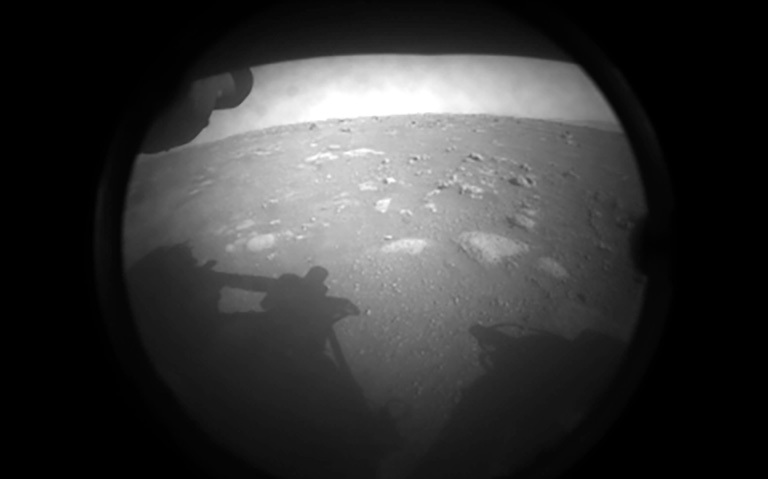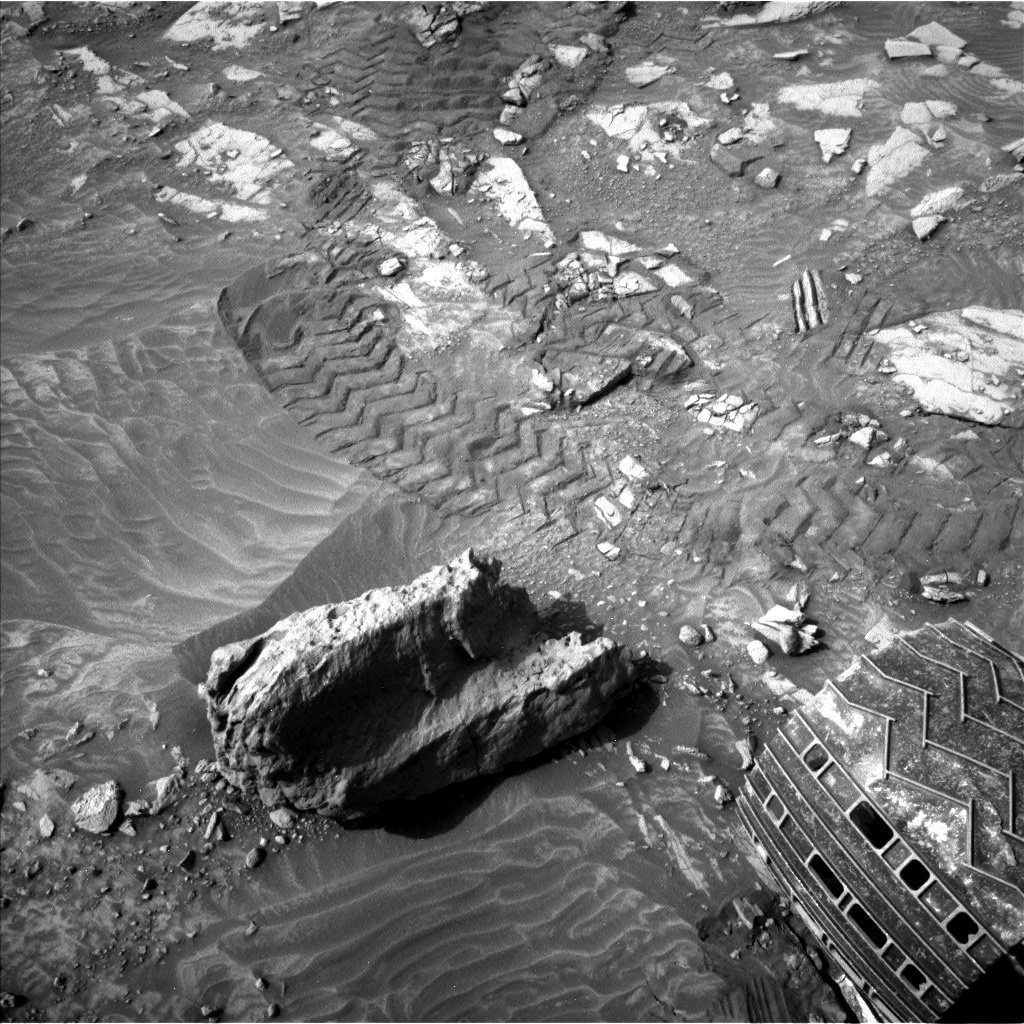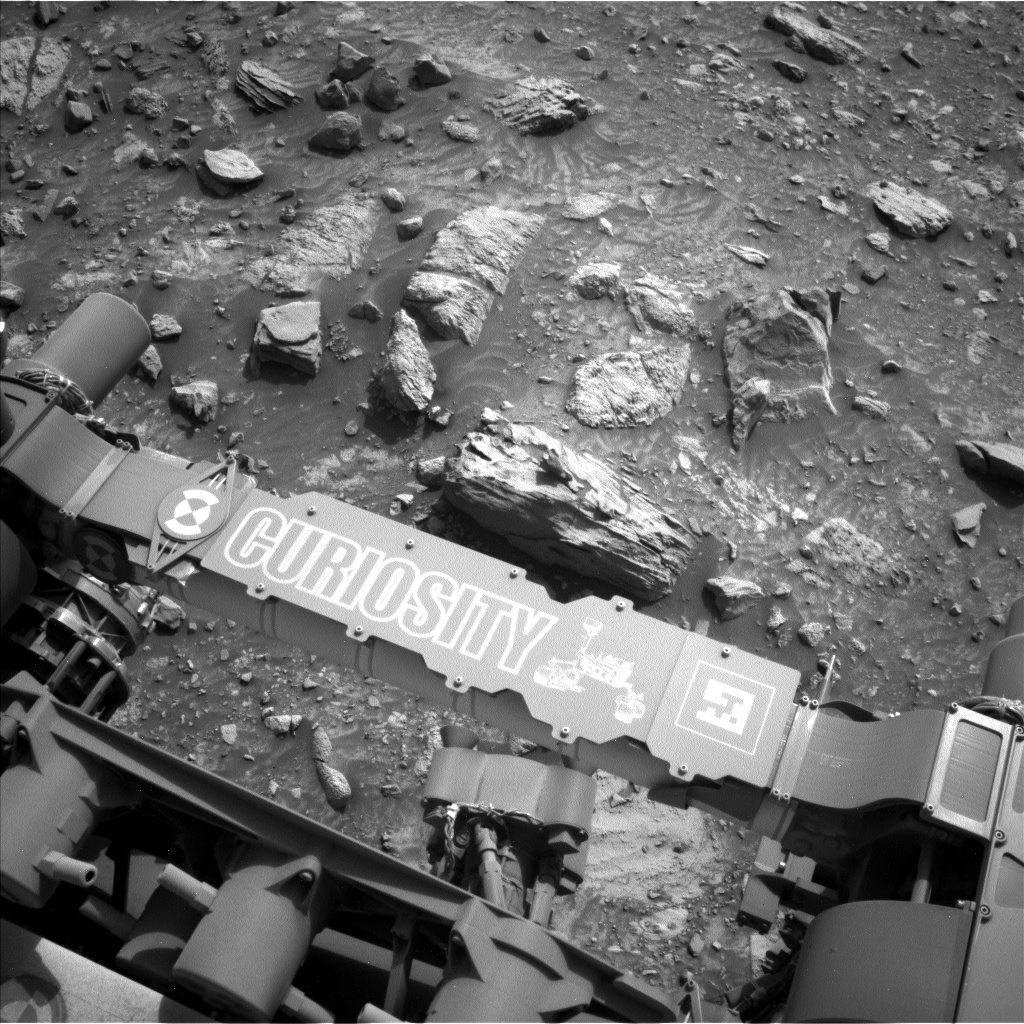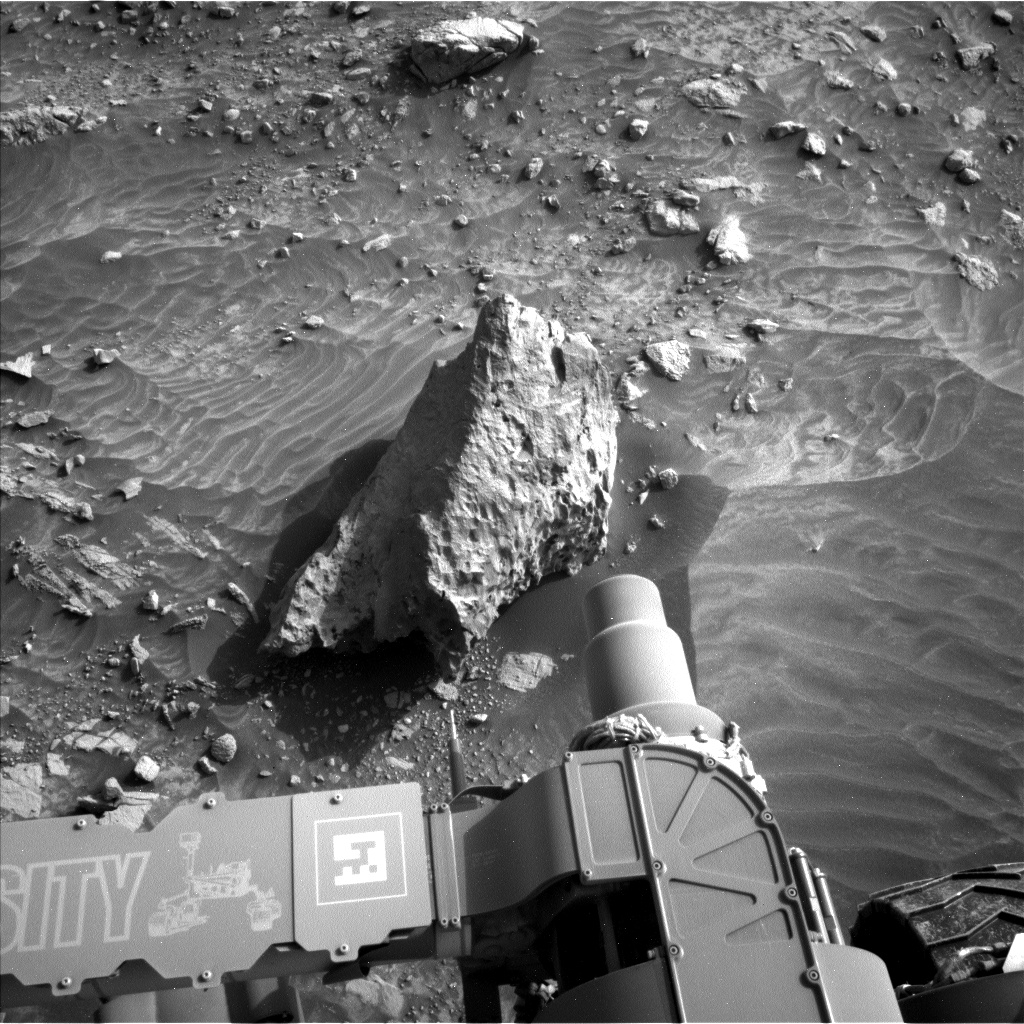2 min read

Congratulations to Perseverance and the whole Mars 2020 team! An amazing achievement at any time but even more so during a global pandemic. I don’t think there was a dry eye yesterday, viewing that first image from Mars (shown above) after the incredible nail biting descent. We are all looking forward to the amazing science that will be done by our sister rover in Jezero Crater!
But while everyone is still on a euphoric high from yesterday’s success and the knowledge that we again have two working rovers on the planet’s surface, we had to buckle down and get back to work in Gale today. Our plan today was complex, with many different activities for both the geology (GEO) and environmental (ENV) theme groups. We are continuing our drive across a rubbly, fractured terrain, analyzing bedrock as we go. APXS, MAHLI, ChemCam and Mastcam are tag teaming on a representative bedrock target (“Chalus”) in today’s workspace to maximize our understanding of this rubbly, fractured bedrock. Additionally, ChemCam is doing a series of passive (non-laser) observations on “Carlux,” “Carsac” and “Castels” – a tongue twisting group of names! These observations will be accompanied by Mastcam observations of the same targets, and of a fifth target “Issac” near the front of the rover.
Our drive on sol 3038 takes us almost 45 metres closer to a hill called “Mont Mercou,” which is about 200 metres away from us right now, and the beginning of what we believe to be more sulfate-rich materials. For over 3000 sols (roughly eight years), we have been driving over fluvio-lacustrine sediments (typically found in rivers and lakes), with occasional forays into sand dunes (ancient and current). However, we have been eyeing this potentially sulfate-rich material for years, watching it get closer and closer. The transition from clay-rich to sulfate-rich is both puzzling and extremely important, and one we are looking forward to getting into!
Written by Catherine O'Connell-Cooper, Planetary Geologist at University of New Brunswick







